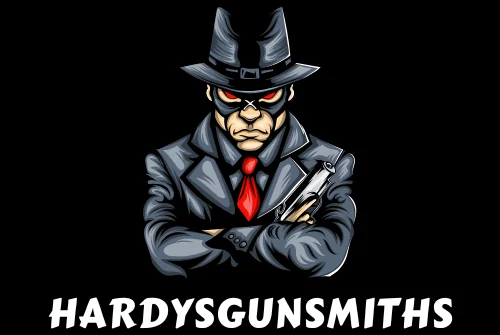In the glitzy world of the Roaring Twenties, few stories capture the essence of glamour and tragedy quite like The Great Gatsby. The 1974 film adaptation brought this classic tale to life with a star-studded cast that left audiences both entranced and a little confused—seriously, who knew Robert Redford could pull off such a questionable hairstyle?
Table of Contents
ToggleOverview of The Great Gatsby (1974)
The 1974 adaptation of The Great Gatsby brought F. Scott Fitzgerald’s classic novel to life with a star-studded cast and stunning visuals. Robert Redford portrayed the enigmatic Jay Gatsby, capturing his charm and complexity. His performance left a lasting impression, even as critics noted his unusual hairstyle.
Mia Farrow took on the role of Daisy Buchanan, embodying the character’s allure and inner conflict. Her portrayal highlighted Daisy’s tragic choices and longing for a life beyond her reach. Supporting roles included Bruce Dern as Tom Buchanan, who exhibited Tom’s arrogance and privilege. Karen Black played Myrtle Wilson, illustrating her desperate desire for a better life.
This film adaptation showcased a lavish depiction of the Roaring Twenties. The production emphasized extravagant parties, opulent costumes, and detailed set designs, immersing viewers in the era’s splendor. The vibrant cinematography enhanced the emotional depth of the story, contrasting wealth with yearning.
Musical score contributions from Nelson Riddle further defined the film’s tone. The soundtrack combined jazz elements with orchestral arrangements, evoking the period’s spirit. This audio-visual partnership enriched the viewing experience by underscoring the rich themes of love, aspiration, and tragedy.
Critical reception varied. Some praised the film’s visual splendor and performances, while others criticized the adaptation for its pacing and focus. Despite mixed reviews, this version of The Great Gatsby has endured as a significant interpretation of Fitzgerald’s work, influencing subsequent adaptations.
Main Cast Members

The 1974 adaptation of The Great Gatsby features a remarkable cast that brought F. Scott Fitzgerald’s characters to life, each portraying distinct traits.
Robert Redford as Jay Gatsby
Robert Redford captivated audiences with his portrayal of Jay Gatsby, the enigmatic millionaire. This role highlighted Gatsby’s charm and obsession, portraying his longing for the past. Redford’s performance showcased a complex character navigating the glitzy yet hollow world of the Roaring Twenties. Viewers noted his striking look, including the memorable hairstyle that stirred conversations. Through Redford’s work, Gatsby’s tragic pursuit of love and acceptance emerged as a central theme.
Mia Farrow as Daisy Buchanan
Mia Farrow embodied Daisy Buchanan, portraying her as both alluring and conflicted. Her performance captured Daisy’s charm and superficiality, reflecting the societal expectations placed on women during the era. Farrow’s vulnerability added depth to the character, illustrating Daisy’s struggles with loyalty and desire. Critics praised her ability to convey emotional complexity, making Daisy’s character relatable yet frustrating. Through Farrow’s portrayal, the audience witnessed the tension between passion and societal norms.
Sam Waterston as Nick Carraway
Sam Waterston played Nick Carraway, the story’s narrator and moral compass. His portrayal offered an insightful perspective on the extravagant world around him. Waterston’s relatable nature allowed audiences to connect with Nick’s observations and feelings. As the story unfolds, Nick’s awareness of Gatsby’s dreams and the disillusionment of the American Dream became evident. Waterston’s depth added nuance to the film, highlighting the contrast between aspiration and reality.
Supporting Cast
The 1974 adaptation of The Great Gatsby features notable performances from a talented supporting cast that enhances the film’s exploration of wealth and moral decay.
Bruce Dern as Tom Buchanan
Bruce Dern delivers a compelling portrayal of Tom Buchanan. His performance embodies the arrogance and entitlement of the character, who exemplifies the darker side of the American Dream. Drawing on Tom’s aggressive nature, Dern showcases his character’s brutality and lack of empathy. The complex relationship between Tom and Daisy, framed by societal expectations, highlights the tension and conflict of their marriage. Critics praised Dern’s ability to capture Tom’s volatility, adding depth to the film’s themes of privilege and disillusionment.
Karen Black as Myrtle Wilson
Karen Black’s depiction of Myrtle Wilson stands out with her vivid interpretation of a woman trapped by her desires and social aspirations. Myrtle’s ambition leads her to seek escape from her constrained life, creating a stark contrast to Daisy’s privileged existence. Black’s performance emphasizes Myrtle’s desperation as she navigates her tumultuous affair with Tom. Her emotional depth communicates the tragic consequences of trying to transcend one’s circumstances. Critics recognized the nuance in Black’s portrayal, enhancing the film’s commentary on love and ambition.
Others in Key Roles
The film features several others in key supporting roles that enrich the narrative. Sam Waterston portrays Nick Carraway, serving as the story’s moral compass and observer. His grounded perspective adds a layer of complexity to the film’s extravagant world. Additionally, Blythe Danner plays Jordan Baker, offering a modern take on the flapper archetype. Her performance highlights the complexities of female independence during the era. Each supporting character contributes to the overall theme, creating a rich tapestry of relationships that define the Roaring Twenties.
Impact of the Cast on the Film’s Success
Robert Redford’s portrayal of Jay Gatsby played a crucial role in the film’s appeal. Capturing Gatsby’s charm and obsession, Redford’s performance drew audiences into the character’s tragic pursuit of acceptance. Mia Farrow’s depiction of Daisy Buchanan significantly contributed to the film’s dramatic depth. She illustrated Daisy’s allure alongside her internal conflict, reflecting the societal expectations placed on women during the 1920s.
Sam Waterston’s Nick Carraway offered a relatable viewpoint throughout the story. His ability to navigate the extravagant world surrounding him helped to highlight the contrast between aspiration and reality. Bruce Dern’s interpretation of Tom Buchanan embodied arrogance and privilege, effectively showcasing the character’s entitlement. Coupled with Karen Black’s vivid portrayal of Myrtle Wilson, the film illustrated themes of desperation and ambition.
Supporting characters further enriched the narrative. Blythe Danner’s depiction of Jordan Baker introduced complexity to the exploration of wealth and moral decay. Each cast member delivered performances that resonated with audiences, enhancing the film’s overall impact. The star-studded ensemble created an unforgettable cinematic experience, solidifying the film’s status as a significant interpretation of F. Scott Fitzgerald’s work. Vibrant cinematography and a distinct musical score complemented the performances, reflecting the lavishness of the Roaring Twenties.
Critical reception varied, yet the cast’s dedication to their roles undeniably boosted the film’s success. Individual performances contributed uniquely to the collective narrative, ensuring that the themes of love, ambition, and tragedy remained at the forefront. These elements combined to foster lasting interest in both the film and Fitzgerald’s original novel.
The 1974 adaptation of The Great Gatsby left an indelible mark on cinema through its remarkable cast and visual storytelling. Each actor brought depth to their roles, making the characters unforgettable. Robert Redford’s portrayal of Jay Gatsby remains iconic, while Mia Farrow’s Daisy Buchanan captured the essence of a complex woman caught in societal expectations. Supporting performances added layers to the narrative, enhancing the film’s exploration of wealth and moral decay.
Despite mixed reviews, the film’s lavish production and compelling performances continue to resonate with audiences. It stands as a significant interpretation of Fitzgerald’s classic, inspiring a renewed interest in both the film and the original novel. The legacy of this adaptation endures, showcasing the timeless themes of ambition, love, and tragedy that define The Great Gatsby.


